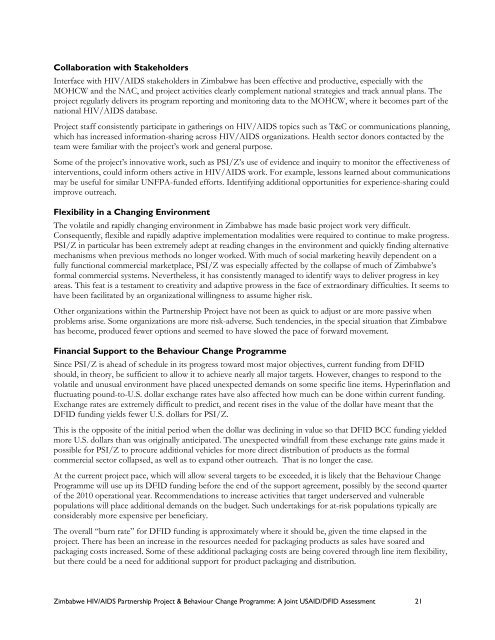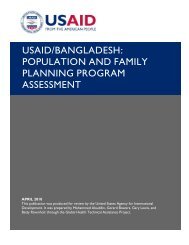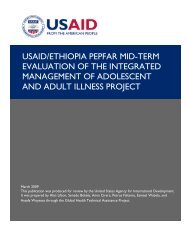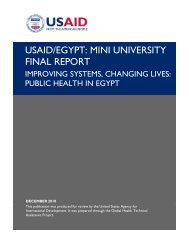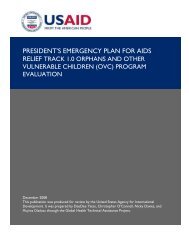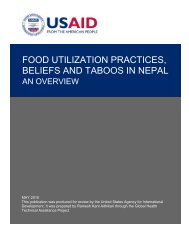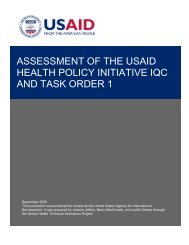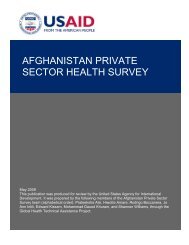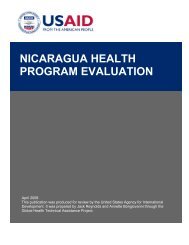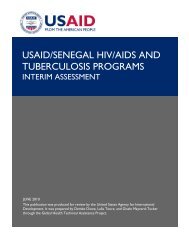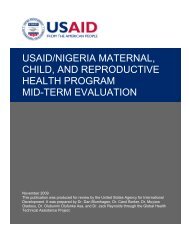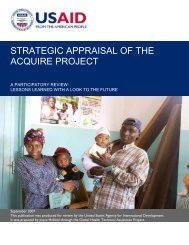Zimbabwe HIV/AIDS Partnership Project & Behaviour Change
Zimbabwe HIV/AIDS Partnership Project & Behaviour Change
Zimbabwe HIV/AIDS Partnership Project & Behaviour Change
- No tags were found...
You also want an ePaper? Increase the reach of your titles
YUMPU automatically turns print PDFs into web optimized ePapers that Google loves.
Collaboration with StakeholdersInterface with <strong>HIV</strong>/<strong>AIDS</strong> stakeholders in <strong>Zimbabwe</strong> has been effective and productive, especially with theMOHCW and the NAC, and project activities clearly complement national strategies and track annual plans. Theproject regularly delivers its program reporting and monitoring data to the MOHCW, where it becomes part of thenational <strong>HIV</strong>/<strong>AIDS</strong> database.<strong>Project</strong> staff consistently participate in gatherings on <strong>HIV</strong>/<strong>AIDS</strong> topics such as T&C or communications planning,which has increased information-sharing across <strong>HIV</strong>/<strong>AIDS</strong> organizations. Health sector donors contacted by theteam were familiar with the project’s work and general purpose.Some of the project’s innovative work, such as PSI/Z’s use of evidence and inquiry to monitor the effectiveness ofinterventions, could inform others active in <strong>HIV</strong>/<strong>AIDS</strong> work. For example, lessons learned about communicationsmay be useful for similar UNFPA-funded efforts. Identifying additional opportunities for experience-sharing couldimprove outreach.Flexibility in a Changing EnvironmentThe volatile and rapidly changing environment in <strong>Zimbabwe</strong> has made basic project work very difficult.Consequently, flexible and rapidly adaptive implementation modalities were required to continue to make progress.PSI/Z in particular has been extremely adept at reading changes in the environment and quickly finding alternativemechanisms when previous methods no longer worked. With much of social marketing heavily dependent on afully functional commercial marketplace, PSI/Z was especially affected by the collapse of much of <strong>Zimbabwe</strong>’sformal commercial systems. Nevertheless, it has consistently managed to identify ways to deliver progress in keyareas. This feat is a testament to creativity and adaptive prowess in the face of extraordinary difficulties. It seems tohave been facilitated by an organizational willingness to assume higher risk.Other organizations within the <strong>Partnership</strong> <strong>Project</strong> have not been as quick to adjust or are more passive whenproblems arise. Some organizations are more risk-adverse. Such tendencies, in the special situation that <strong>Zimbabwe</strong>has become, produced fewer options and seemed to have slowed the pace of forward movement.Financial Support to the <strong>Behaviour</strong> <strong>Change</strong> ProgrammeSince PSI/Z is ahead of schedule in its progress toward most major objectives, current funding from DFIDshould, in theory, be sufficient to allow it to achieve nearly all major targets. However, changes to respond to thevolatile and unusual environment have placed unexpected demands on some specific line items. Hyperinflation andfluctuating pound-to-U.S. dollar exchange rates have also affected how much can be done within current funding.Exchange rates are extremely difficult to predict, and recent rises in the value of the dollar have meant that theDFID funding yields fewer U.S. dollars for PSI/Z.This is the opposite of the initial period when the dollar was declining in value so that DFID BCC funding yieldedmore U.S. dollars than was originally anticipated. The unexpected windfall from these exchange rate gains made itpossible for PSI/Z to procure additional vehicles for more direct distribution of products as the formalcommercial sector collapsed, as well as to expand other outreach. That is no longer the case.At the current project pace, which will allow several targets to be exceeded, it is likely that the <strong>Behaviour</strong> <strong>Change</strong>Programme will use up its DFID funding before the end of the support agreement, possibly by the second quarterof the 2010 operational year. Recommendations to increase activities that target underserved and vulnerablepopulations will place additional demands on the budget. Such undertakings for at-risk populations typically areconsiderably more expensive per beneficiary.The overall “burn rate” for DFID funding is approximately where it should be, given the time elapsed in theproject. There has been an increase in the resources needed for packaging products as sales have soared andpackaging costs increased. Some of these additional packaging costs are being covered through line item flexibility,but there could be a need for additional support for product packaging and distribution.<strong>Zimbabwe</strong> <strong>HIV</strong>/<strong>AIDS</strong> <strong>Partnership</strong> <strong>Project</strong> & <strong>Behaviour</strong> <strong>Change</strong> Programme: A Joint USAID/DFID Assessment 21


